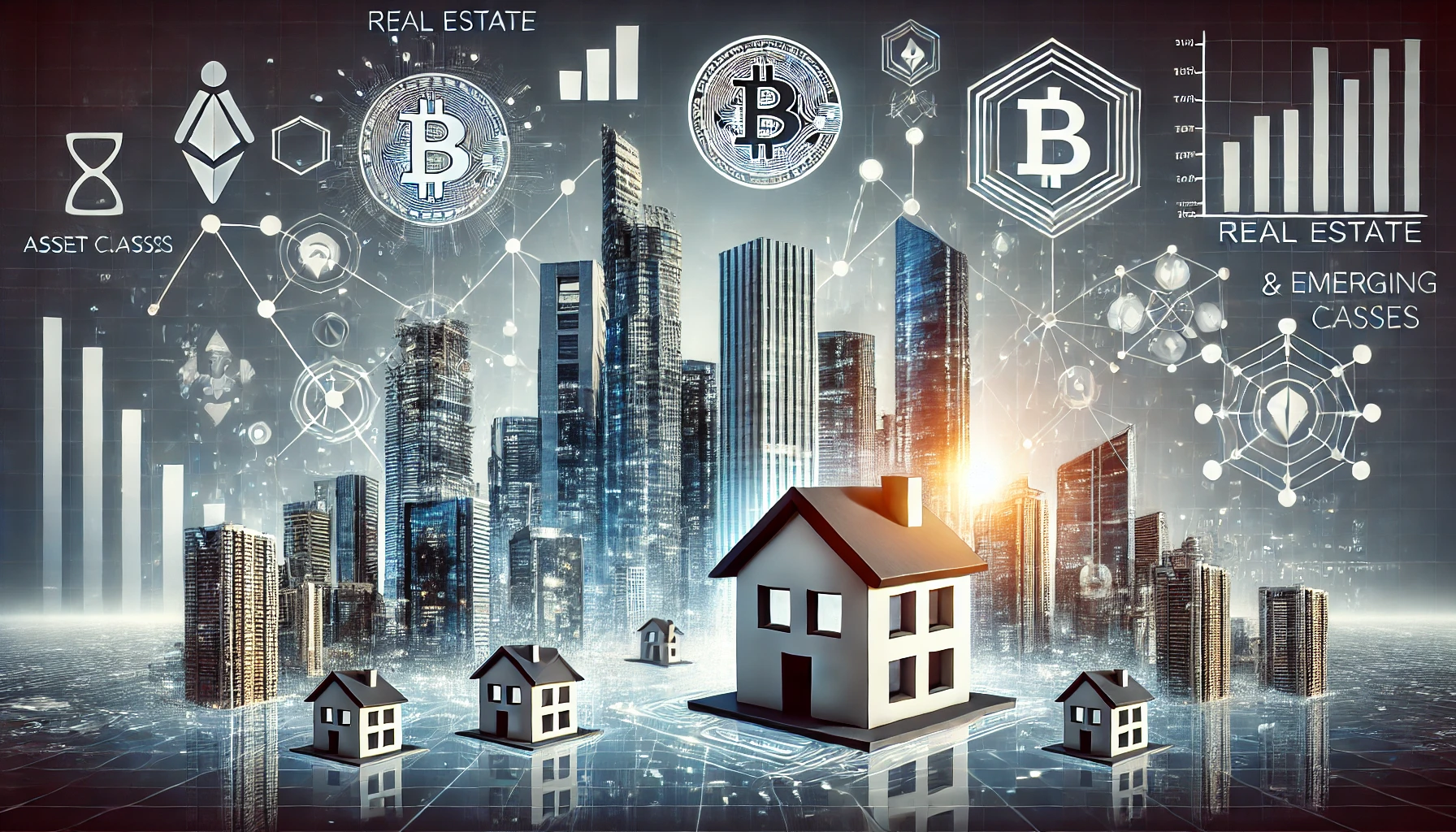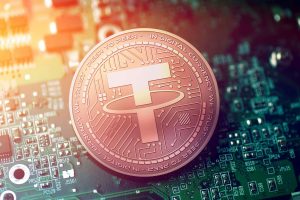
- RWAs integrate equities, bonds, real estate on blockchain, reducing traditional finance barriers like high transaction costs.
- Private credit within RWAs struggles with bad debt, adverse selection, and high interest rate impacts.
- Tokenized commodities see incremental growth, with gold leading while other assets like oil lag behind.
- Major institutions like BlackRock and Franklin Templeton boost tokenized Treasury market, expanding RWA sector presence.
The integration of Real-World Assets (RWAs) into blockchain platforms is reshaping the landscape of finance by bridging traditional financial markets with the emerging Web3 space. This initiative aims to create a seamless and interconnected environment for assets such as equities, bonds, real estate, and commodities to be tokenized, thereby circumventing the conventional barriers associated with traditional finance, like information asymmetry and high transaction costs.
Despite the innovative potential of RWAs, the journey toward widespread adoption has encountered challenges. The process has been gradual, marked by periodic setbacks that reflect the complexities of merging physical assets with digital technologies.
For instance, the private credit sector, a prominent category within RWAs, has faced issues such as bad debt spurred by adverse selection and decreased demand due to historically high interest rates. Moreover, the realms of tokenized equity and real estate have navigated through layers of regulatory uncertainties, complicating their integration into blockchain systems.
However, the demand for tokenized commodities has been on a modest rise, with gold leading the way. Yet, this interest hasn’t extended to other precious metals or hard assets like oil, indicating a selective acceptance within the commodity tokenization space.
Amid these challenges, there has been a notable expansion in the RWA sector, driven by substantial engagement from leading financial institutions. Major traditional finance entities like BlackRock and Franklin Templeton have contributed to the growth of the tokenized Treasury market, which has reached new heights under their influence.
Additionally, the market for tokenized non-U.S. debt, equities, and real estate continues to develop, albeit at a slower pace. The industry is also exploring the tokenization of alternative assets such as carbon credits and air rights, marking a foray into newer domains that could offer unique opportunities for investors.
In response to these evolving trends, several startups are now venturing to establish their dedicated RWA-focused blockchains. These initiatives aim to tailor blockchain technology specifically to handle the distinct requirements and regulatory frameworks associated with real-world assets, potentially paving the way for more streamlined and efficient asset tokenization processes.
Integration and Growth of RWAs in Blockchain

The integration of Real-World Assets (RWAs) into blockchain systems is expanding, transforming both the financial landscape and how traditional assets are managed and transacted. RWAs, including currencies, real estate, bonds, and commodities, are now being tokenized, creating a digital representation on blockchain platforms.
This movement is primarily driven by the aim to reduce the high transaction costs, eliminate information asymmetry, and dismantle the restrictive barriers often seen in traditional finance (TradFi).
As of recent data, the total value of on-chain RWAs, excluding the extensive stablecoin market valued at over $175 billion, has surpassed $12 billion. This demonstrates a growing confidence and reliance on blockchain technology to handle and secure traditional financial assets in a decentralized environment.
Tokenized U.S. Treasuries have shown substantial growth, their market value increasing from $769 million at the start of 2024 to more than $2.2 billion by September.
The rise is occurring in a financial climate where U.S. federal funds rates are at a 23-year high of between 5.25% and 5.5%, making these government-backed securities an attractive option for investors seeking stable yields. The U.S. Treasuries are often regarded as low-risk assets since they are backed by the government’s assurance.
Challenges and Future Prospects in Private Credit and Tokenized Treasuries

Looking ahead, the U.S. Federal Reserve is expected to initiate a rate cut at the upcoming Federal Open Market Committee (FOMC) meeting this September. This impending adjustment will likely influence the yields on tokenized Treasuries, and thus, the attractiveness of these assets might shift, depending on the frequency and magnitude of the rate cuts.
In the private credit sector, which involves non-bank financial institutions offering loans primarily to small and medium-sized enterprises, there has been a noteworthy transition onto the blockchain. This market, estimated at over $2.1 trillion in 2023 by the International Monetary Fund (IMF), has about $9 billion represented on-chain, constituting roughly 0.4% of the total market.
Despite challenges such as borrower default risks, the sector has seen a year-over-year increase of approximately 56% in active loans, driven by innovations and efficiencies introduced through blockchain technology.
Tokenization of Commodities, Bonds, and Stocks

The integration of Real-World Assets (RWAs) with blockchain technology is broadening the range of assets being tokenized, including commodities, bonds, and stocks.
Tokenization converts tangible and intangible assets into digital tokens on a blockchain, addressing common challenges like storage, transportation, and divisibility.
Commodities
In the commodities sector on the blockchain, tokenized gold products currently dominate, holding approximately 98% of the nearly $970 million market. The leading tokens, Paxos Gold ($PAXG) and Tether Gold ($XAUT), exemplify this trend. Despite the presence of these tokens, traditional gold exchange-traded funds (ETFs), with a market cap exceeding $110 billion, continue to be favored, indicating a gradual shift of investor confidence to blockchain-based assets.
Bonds and Stocks
The market for tokenized bonds and stocks remains relatively small but is developing, with a combined market capitalization around $80 million.
This segment includes various non-U.S. Treasury government debts, particularly from Europe, and a few tokenized corporate bonds. Additionally, tokenized stocks such as those of Coinbase, NVIDIA, and an S&P 500 tracker are emerging, all issued by the protocol Backed.
Real Estate and Emerging Asset Classes

Real Estate
Tokenized real estate, one of the older concepts in cryptocurrency, has not yet reached broad adoption. However, platforms like Parcl are pushing forward, developing tokenized real estate solutions on the Solana blockchain. This approach aims to modernize the real estate investment process by leveraging blockchain’s inherent efficiencies.
Innovative Assets
New categories are also being explored, such as the tokenization and trading of air rights, which involves managing the rights to develop or utilize the space above land parcels. This niche is spearheaded by startups like SkyTrade.
Additionally, the tokenization of carbon credits is gaining attention, with companies like Toucan leading the charge. These efforts fall under the umbrella of regenerative finance (ReFi), which seeks to align financial mechanisms with sustainable environmental outcomes.
In a broader application, the Plume Network is developing a modular Layer 2 platform aimed at tokenizing a diverse range of assets, from luxury goods like watches to fine art, expanding the applicability of blockchain technology in traditional asset markets.
Infrastructure and Compliance in RWA Tokenization

Real-World Assets (RWAs) are integrated into decentralized finance (DeFi) via blockchain technology, requiring solid infrastructural support. At the core of RWA tokenization are Layer-1 (L1) blockchain networks that support smart contract functionalities. These networks are essential for translating tangible assets into digital equivalents on the blockchain.
- Smart Contracts: These contracts are foundational, using standards such as ERC20, ERC721, or ERC1155 to digitally represent physical assets. They are engineered to automate the allocation of yields from these assets into the blockchain ecosystem. This can be done through mechanisms like rebasing tokens (e.g., stETH) or non-rebasing tokens (e.g., wstETH).
To align with regulatory standards of traditional finance, many RWA protocols incorporate permissioned roles at both the smart contract and chain access levels. This design allows for controlled access and operations, ensuring that blockchain’s decentralized nature complies with legal requirements.
Furthermore, these contracts are equipped to limit token ownership and transfers based on Know Your Customer (KYC) and Anti-Money Laundering (AML) standards, capable of blocking transactions involving sanctioned entities like Tornado Cash.
The Role of Oracles in RWAs
Oracles play a dual role in the ecosystem of RWAs. Firstly, they provide necessary off-chain data, such as treasury rates and asset valuations, ensuring that the on-chain representations are accurate reflections of real-world values. Secondly, oracles can initiate on-chain actions based on off-chain legal agreements, such as triggering smart contract functionalities in response to conditions like loan defaults.
Unlike general-purpose oracles such as Chainlink, which serve a broad range of use cases, RWA-specific oracles are tailored to address the unique challenges of managing and tokenizing real-world assets like real estate, commodities, and invoices. These specialized oracles ensure compliance with legal requirements, maintain accurate valuations, and adhere to regulatory oversight.
Enhancements in Tokenization of Real-World Assets: Technological Contributions
Chronicle Protocol now secures MakerDAO’s DAI treasury by providing real-time, high-frequency data that is crucial for DeFi applications that need continuous updates. The recent integration of their RWA oracle with the M^0 stablecoin minting protocol marks an advancement. Chronicle acts as an independent validator, offering accurate data on off-chain collateral used in minting the M stablecoin, ensuring the integrity of collateral balances.
Chainlink’s Proof of Reserve (PoR), although not solely an RWA oracle, is crafted to verify the backing of RWAs with real assets. This function bolsters the credibility of tokenized assets by confirming their tangible asset backing.
DIA (Decentralized Information Asset) provides a transparent, validated data solution for DeFi applications that deal with RWAs. As an open-sourced, cross-chain oracle platform, it facilitates the accessibility of reliable data in the blockchain ecosystem. In a similar vein, Tellor offers off-chain data through a decentralized network, emphasizing trust-minimized feeds necessary for RWAs.
Tokens must comply with relevant regulations such as KYC/AML. Many protocols include features like whitelisting and blacklisting and support necessary regulatory reporting.
For specific RWAs, using permissioned blockchains or hybrid models is essential to limit access and ensure privacy. Technologies such as soulbound tokens (SBTs) and zero-knowledge SBTs (zkSBTs) are explored for their potential to verify identities while protecting sensitive information.
In asset custody, secure multi-signature or multi-party computation (MPC) wallets manage digital assets on-chain. Off-chain, traditional custodians manage the physical assets, ensuring legal compliance in ownership and transfer processes.
The Expansion of Traditional Finance into Tokenized Treasuries

Traditional finance institutions have notably expanded their reach into the realm of real-world asset (RWA) tokenization. This trend illustrates a bridging of conventional financial practices with blockchain technology, emphasizing a shift towards more integrated financial solutions.
BlackRock, managing assets worth US$10.5 trillion, stands at the forefront of this movement with its USD Institutional Digital Liquidity Fund (BUIDL). Since its launch in late March, BUIDL has rapidly grown to a market capitalization of over US$510 million, making it the most substantial tokenized Treasury product currently available.
BlackRock collaborates with Securitize, a key player in RWA tokenization, to manage the fund’s operations including tokenized shares and the facilitation of fund subscriptions, redemptions, and distributions. BlackRock’s strategic management of the fund’s assets across cash, US Treasuries, and repurchase agreements further underpins its leading position in the market.
Additionally, BlackRock has ventured into the US spot ETF market, becoming the issuer of the largest spot Bitcoin and Ether ETFs. This diversification highlights its adaptive strategies in finance, leveraging blockchain to enhance traditional investment vehicles.
Another major player, Franklin Templeton, with assets under management of US$1.5 trillion, follows closely with its OnChain US Government Money Fund (FOBXX). Positioned as the second-largest tokenized Treasury product, FOBXX boasts a market cap of over US$440 million and primarily operates on Stellar, alongside availability on Polygon and Arbitrum platforms.
Franklin Templeton’s integration of blockchain technology extends to Benji, a platform that facilitates investments in tokenized securities including FOBXX. Investors can convert USDC to FOBXX and transact shares directly on-chain, enriching the user experience and functionality of digital investments.
Moreover, Franklin Templeton operates nodes across several notable proof-of-stake networks such as Ethereum, Solana, and Cardano, demonstrating its commitment to supporting and securing blockchain infrastructure.
WisdomTree Investments, with an AUM of US$110 billion, has embraced digital transformation by launching multiple Digital Funds. These funds encompass tokenized Treasuries, equities, and other strategic financial products, totaling over US$23 million in AUM.




















